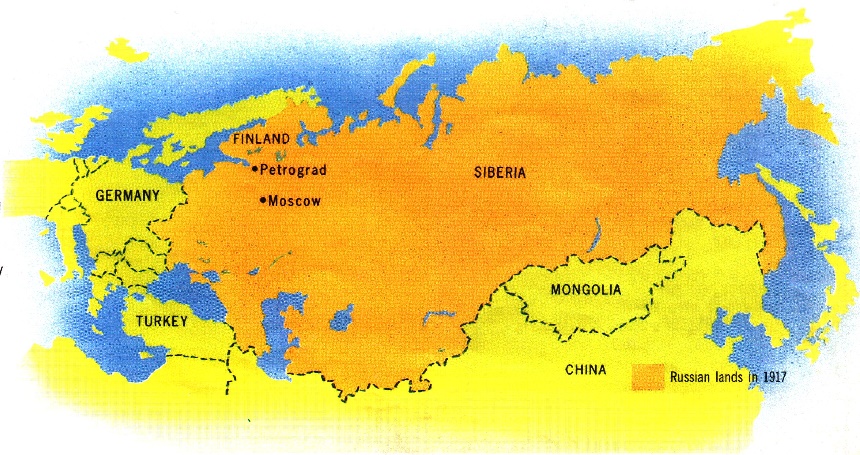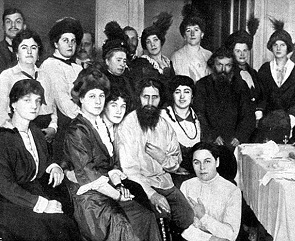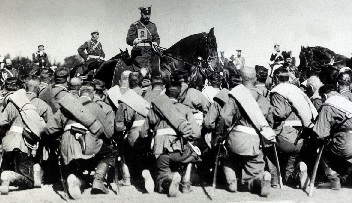
Background to the Russian Revolution


The map shows Russia in 1917. Russia stretched 4,000 miles from east to west. It was a very backward country.
The Tsar ruled over 150 million people. Most of them were poor peasants.
Introduction
Russia under the Tsars
Nicholas II became Tsar of Russia In 1894. Until 1905, he was an autocrat. He was totally in control of the government. If people rioted, he sent the Cossacks (soldiers) to attack them. His secret police spies tracked down people who did not like the government and sent them to prison camps in Siberia.
In 1905, there was a revolution in Russia. The Tsar was forced to accept a parliament. It was called the Duma. The Tsar still made all the decisions. If the members of the Duma disagreed with him, he sent them away.
Communism
Communists were people who agreed with the writer Karl Marx (1818-1883). Sometimes, they were called 'Marxists'. Marx had said that the Industrial Revolution had made the bourgeois (the middle classes) rich and powerful. But they had made the workers their 'wage slaves'.
Marx said it was time for the Proletariat (the workers) to rebel and take power for themselves. They would abolish private ownershlp, and hold all things in common. That is why they were called 'Communists'.
The most extreme Communists in Russia were a group called the Bolsheviks.
Rasputin
The story of Rasputin is amazing.
Nicholas and Alexandra's son, Alexis, had the disease haemophilia. His blood would not clot, so he could not stop bleeding when he cut himself. The only man who could stop the bleeding was a holy man called Rasputin. Fear can help the blood to clot, and some doctors think that Rasputin simply scared the poor boy to health! Some historians think he used hypnosis.

Rasputin takes tea with a group of rich female followers |
While Nicholas was away fighting with the Army, he left his wife Alexandra in charge of the government. Rasputin became her chief adviser. The Tsarina said that he was her only friend. Minsters who criticised him were sacked.
Nicholas warned her, 'Our friend's opinions are very strange you must be very careful'. But he did not stop her. People laughed at the Tsarina and hated Rasputin.
The March Revolution
|
Nicholas blessing his troops The Russian Army did badly in the First World War. In 1915, Tsar Nicholas took control of the Russian Army. This was a disaster for Nicholas: people blamed him for the defeats. |
In March 1917, while Nicholas was away with the army, the growing tensions bubbled over into revolution. Crowds of people rioted on the streets. The soldiers sent to stop them joined them. Members of the Duma joined in also; on 15 March 1917 they forced the Tsar to abdicate (resign).
After you have studied this webpage, answer the question sheet by clicking on the 'Time to Work' icon at the top of the page
Links:
The following websites will help you research further:
GCSE Materials:
this johndclare.net GCSE page looks at
How Strong was the Tsar in 1913 in more detail
Russian dates:
Before February 1918, Russia was still using the old
Julian calendar, which because it wrongly calculates a year as 365ผ
days had gradually fallen 13 days behind the Gregorian calendar used by the rest of the world.
This is why we call 8-15 March: The February Revolution,
and the Bolshevik coup d้tat of 6-8 November: The October Revolution. This website uses
the modern dates, but you must not get confused if you read other sources
which use the Russian dates of the time. You can see
a table comparing the two calendars here.
